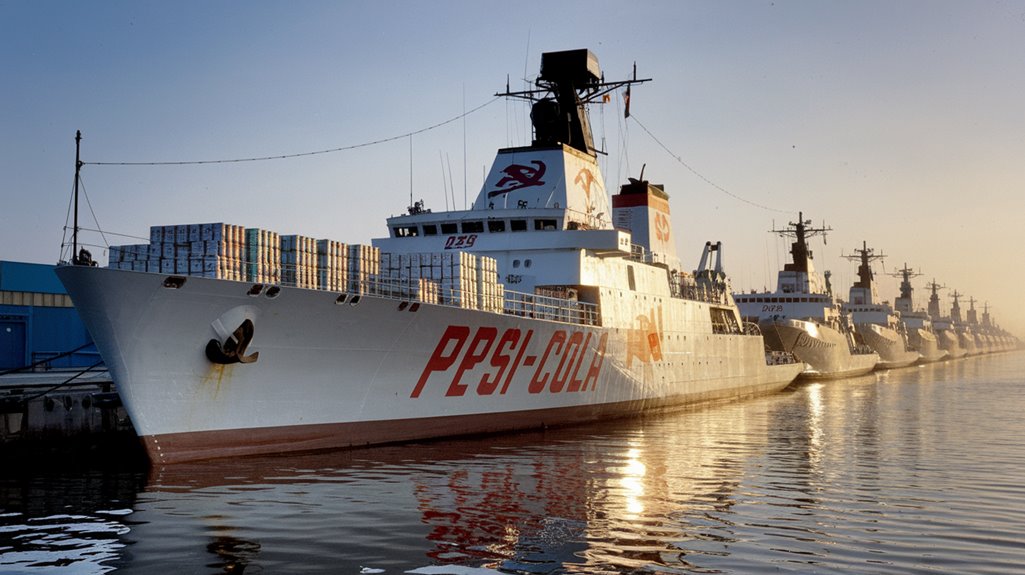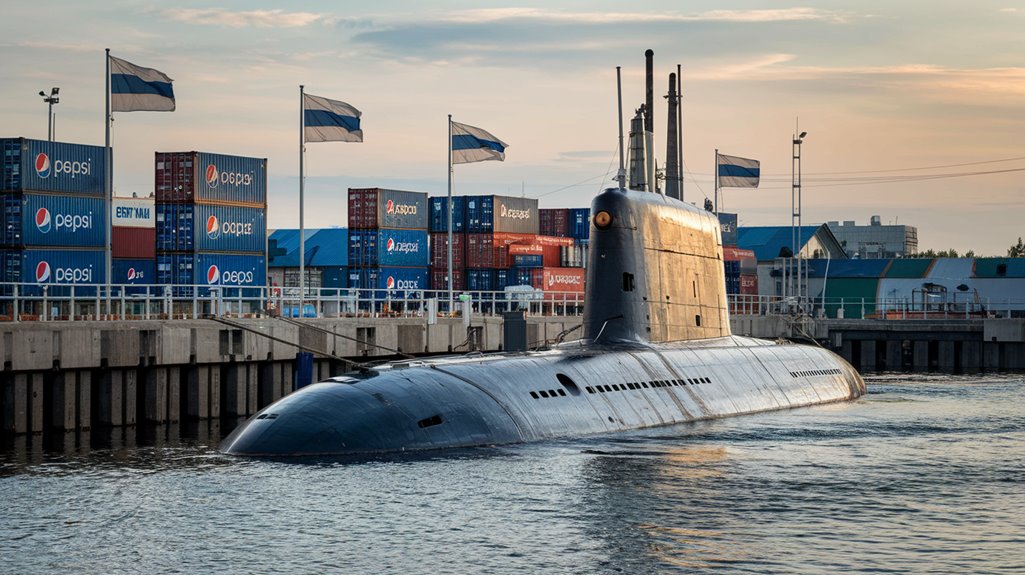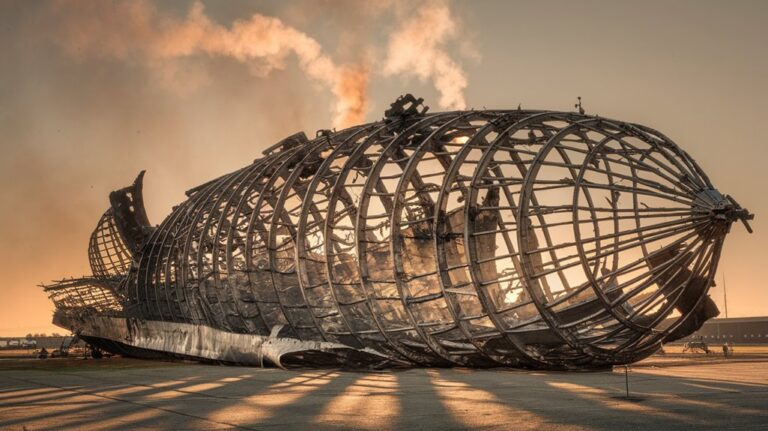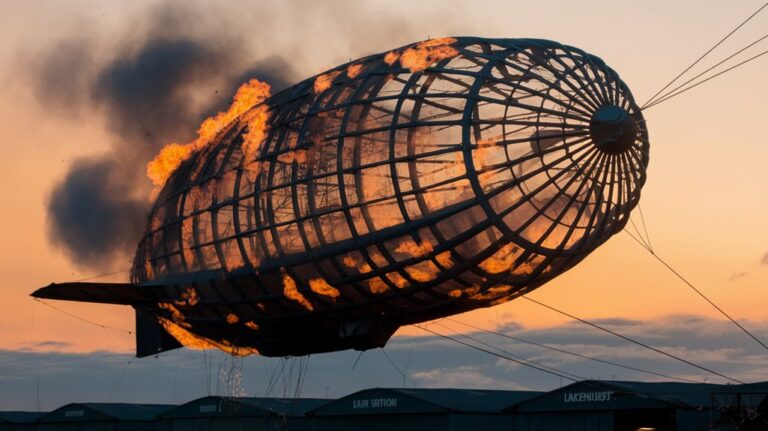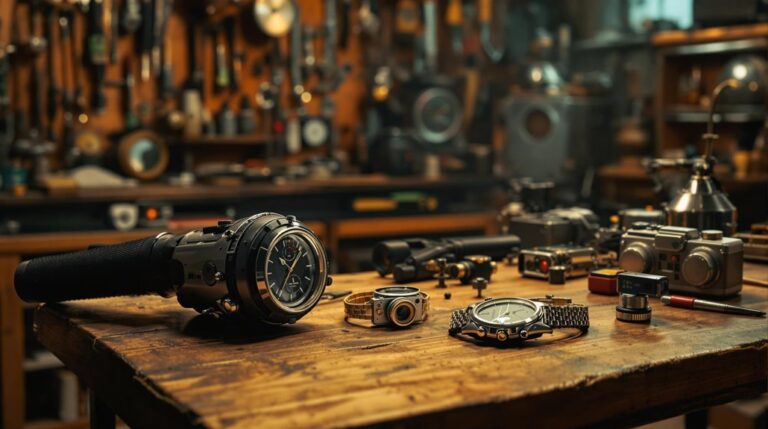When Pepsi Briefly Owned the World’s Sixth Largest Navy
You've probably traded baseball cards or swapped lunch items at school, but have you ever traded soda for submarines? In 1989, that's exactly what Pepsi did when it accepted a fleet of Soviet naval vessels, including 17 submarines, as payment for its cola products. While you might imagine Pepsi briefly becoming a maritime superpower, the reality behind this unusual business deal reveals more about Cold War economics and creative problem-solving than military ambitions. Let's explore what really happened.
The Cold War Cola Deal: How Pepsi Acquired Soviet Warships
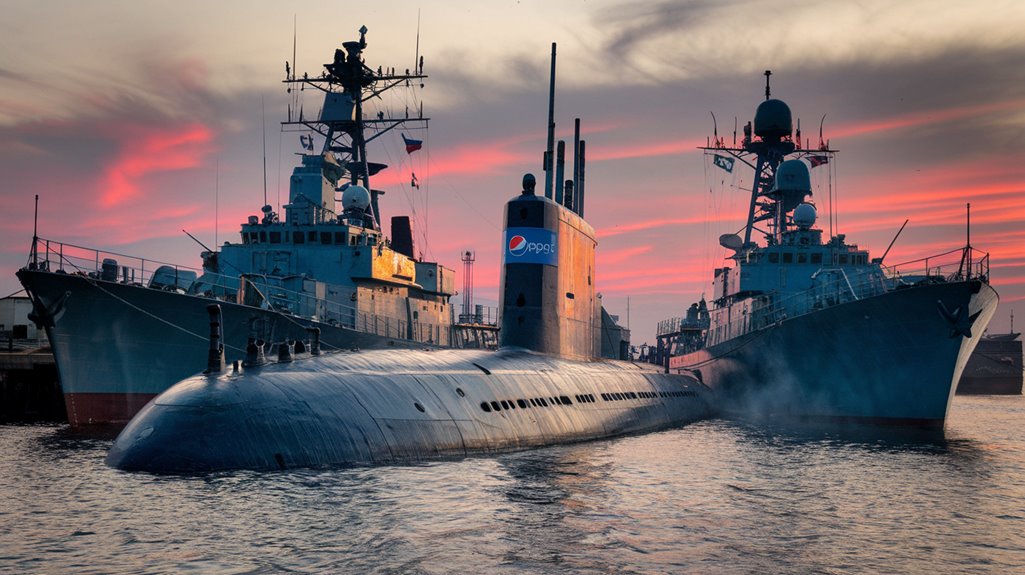
When Pepsi became the first foreign consumer product sold in the USSR in 1972, it faced an unusual challenge that would later lead to one of history's most remarkable business deals.
The problem? You couldn't exchange Soviet rubles outside the USSR, forcing Pepsi to embrace soda diplomacy through creative solutions.
Initially, Pepsi traded its syrup for Stolichnaya vodka, which it could sell in Western markets. The company formed a joint venture partnership with the Soviet government to facilitate this unique trading arrangement.
This historic deal originated when Khrushchev tasted Pepsi during the 1959 US-USSR cultural exhibitions.
But by 1989, US sanctions on Soviet products disrupted this arrangement.
In response, the USSR offered something unprecedented in the barter economy: a fleet of naval vessels.
The deal included 17 submarines, a cruiser, a frigate, and a destroyer – all obsolete but valuable as scrap metal.
You might think Pepsi was building a navy, but they quickly sold the vessels to a Swedish company for $3 million.
Breaking Down the Naval Fleet Numbers
Five major naval powers dominate today's maritime landscape, with China leading the count at 730 warships, followed by Russia's 598 vessels. In this modern naval warfare era, North Korea maintains 519 ships, while the U.S. operates 484, and Sweden rounds out the top five with 367 vessels.
The Indonesian navy currently operates 324 active vessels, making it a significant maritime force in Asia. However, a naval fleet comparison reveals that raw numbers don't tell the whole story. The U.S. still leads in naval power with the highest TvR score and maintains significant advantages in key areas. This was demonstrated historically when Pepsi acquired a Soviet fleet through a unique trade deal that temporarily made it the world's sixth-largest navy.
You'll find America's fleet includes 67 submarines and an impressive 2,464 naval aircraft, far surpassing China's 437 aircraft. The U.S. also invests heavily in its navy, spending $877 billion compared to China's $292 billion, demonstrating that quality and technological superiority often matter more than quantity.
From Soda to Ships: The Business Strategy Behind the Deal
As the Soviet Union grappled with economic challenges in the late 1980s, Pepsi faced a unique opportunity to expand its market presence through an unconventional business deal.
The company's CEO, Donald Kendall, had to navigate complex currency issues since Soviet rubles held no international value. Rather than abandoning their business expansion plans, Pepsi embraced an innovative solution. Prior to this unprecedented naval deal, the company had successfully traded their products for Soviet-made vodka as payment. This unique arrangement made Pepsi the first capitalist product to enter the Soviet market.
The $3 billion deal wasn't just about acquiring naval vessels—it represented a strategic move to maintain Pepsi's foothold in the Soviet market while facilitating cultural exchange between East and West.
Debunking the Military Power Myth
Despite popular belief, Pepsi never actually commanded the world's sixth-largest naval fleet. This misconception reflects a broader tendency to oversimplify military power and global influence through basic metrics like vessel counts or monetary value.
Just as experts now use sophisticated tools like the Military Technology & Capability scoring system to assess true military strength, you can't measure naval power simply by counting ships. The Military Equipment Index reveals that military capacity distribution can vary significantly from spending levels.
The myth overlooks essential factors that determine actual military strategy and effectiveness, including technological sophistication, operational capability, and strategic deployment. A whole-of-government approach is crucial for achieving meaningful military success, rather than focusing solely on force size or equipment numbers.
Modern military assessment methods show that quantity alone doesn't define naval strength – it's the combination of advanced technology, tactical expertise, and strategic implementation that matters.
This understanding helps explain why the Pepsi fleet story, while intriguing, doesn't accurately reflect real military power dynamics.
The Economic Reality of Soviet-American Trade
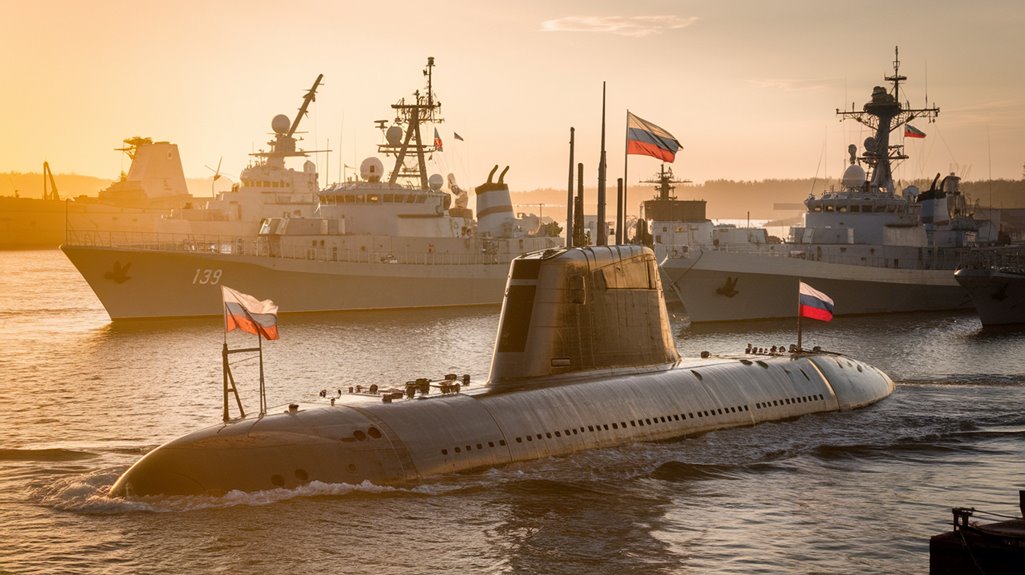
While the Pepsi fleet story captured public imagination, the real significance lay in the complex economic relationship between the Soviet Union and United States during this period.
The Soviet trade reality centered on desperate needs: hard currency acquisition and market access. Soviet foreign trade was extremely limited, accounting for only 4% of GNP in 1985. You'd find economic cooperation was essential for both nations, with the 1990 Trade Agreement establishing critical commercial frameworks. Under the guidance of Donald Kendall's leadership, PepsiCo became one of the first American companies to establish significant trade partnerships with the Soviet Union.
The Soviet Union's economic challenges manifested in four key ways:
- A severely depressed command economy requiring urgent restructuring
- Significant shortages of Western currency for international purchases
- Limited access to global markets and Western technology
- Restricted ability to establish joint ventures with American companies
The reality wasn't about military assets but rather about a struggling superpower seeking to transform its economy through Western trade partnerships and market access.
What Happened to Pepsi's Soviet Fleet
When PepsiCo struck its innovative barter deal with the Soviet Union in 1989, no one expected it would involve a fleet of aging warships.
You might wonder what happened to this unusual Cold War acquisition. The truth is, PepsiCo's strategy wasn't to create a naval force – they never actually operated the ships.
The fleet, consisting of 17 submarines, a cruiser, a frigate, and a destroyer, was destined for scrap from the start. A Norwegian shipping company brokered the deal, but things didn't go as planned. This unusual arrangement was part of Gorbachev's Perestroika reforms to encourage Western business partnerships.
When the Soviet Union collapsed, the arrangement fell apart. The obsolete vessels, which were supposed to be worth billions in trade value, ended up being sold for scrap at considerably lower prices. The deal was originally meant to help PepsiCo overcome currency restrictions that made it difficult to get profits out of the USSR.
It's a fascinating footnote of Cold War commerce that shows how companies had to get creative with Soviet trade.

